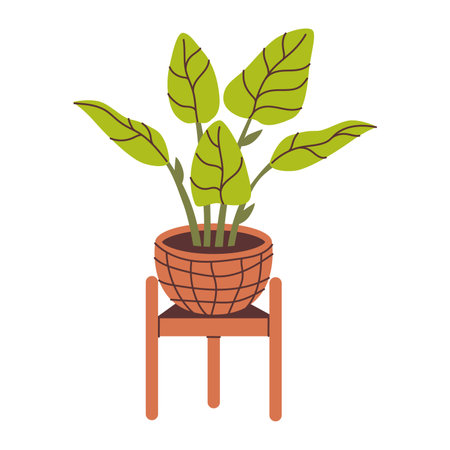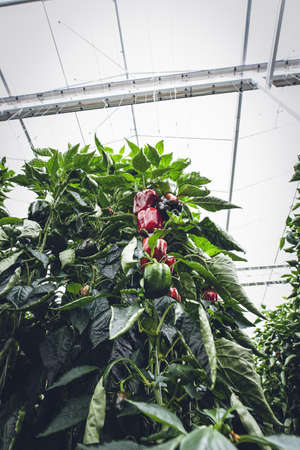Choosing the Right Spot in Your Shed or Greenhouse
Before you set up a garden tool maintenance station, it’s important to choose the ideal spot within your British shed or greenhouse. Consider practicality first: pick a space that is easy to access every time you’re gardening, so you don’t need to move other items out of the way just to reach your tools. Good organisation starts with location.
Look for Ventilation
Ventilation is crucial for keeping your tools rust-free and preventing any musty smells. Sheds and greenhouses in the UK can get damp, especially during rainy months. Position your maintenance station near a window or door that can be left open when the weather allows. If your structure has vents, try setting up nearby to benefit from fresh air circulation.
Keep It Dry and Clean
Avoid placing your tool station directly on the ground or against walls where condensation might gather. Opt for an area with minimal risk of leaks or puddles—perhaps raised off the floor on sturdy shelving or a bench. This helps keep tools dry and ready for use at all times.
Consider Convenience
The best spot is one close to where you usually enter with your muddy boots and gardening gloves. That way, it’s simple to clean, sharpen, and store tools straight after use, making your routine more efficient and keeping your shed or greenhouse tidy.
Essential Maintenance Tools and Supplies
Setting up a proper maintenance station in your British shed or greenhouse starts with gathering the right tools and supplies. A well-equipped station ensures your gardening equipment remains in top condition for seasons to come. Below is a checklist of essential items tailored for British gardeners, focusing on quality and practicality.
Must-Have Maintenance Tools
| Tool | Purpose |
|---|---|
| Wire Brush | Removes soil, rust, and plant residue from metal surfaces |
| Sharpening Stone (Whetstone) | Keeps blades of secateurs, shears, and spades sharp |
| Mild Detergent | Cleans wooden and metal handles gently without damage |
| Linseed Oil | Nourishes and protects wooden tool handles from cracking |
| Lubricating Oil (e.g., 3-in-1 oil) | Prevents rust on metal parts and keeps moving parts smooth |
| Spare Rags or Cloths | For wiping down and drying tools after cleaning |
Quality British Gardening Supplies
- Galvanised Tool Rack – Keeps everything organised and easy to reach
- S-hooks or Hanging Rails – For hanging larger tools like rakes and forks
- Tough Storage Boxes – Ideal for keeping smaller items tidy and dry
Tips for Selecting Supplies
- Opt for British-made products where possible, as they are often designed for local conditions.
- Choose stainless steel tools which resist rust better in damp UK climates.
A Note on Safety Gear
Don’t forget basic protective items such as sturdy gloves and safety glasses when working with oils or sharpening blades. Having these essentials within your maintenance station will make every upkeep task safer and more efficient.

3. Organising and Storing Your Tools the British Way
When it comes to keeping your garden tool maintenance station neat and efficient, nothing beats a touch of classic British organisation. Start by making the most of local materials such as reclaimed timber, vintage crates, or even old fruit boxes from a nearby market. These not only add character but are sturdy enough for years of use.
Wall-Mounted Solutions
Fixing wooden racks or pegboards to the shed wall is a tried-and-true British method for storing spades, forks, and hand tools. Pegboards let you easily rearrange hooks and keep everything within arm’s reach. For smaller items, consider hanging baskets or enamel containers – they’re both practical and add that timeless British charm.
Classic Storage Ideas
If you have space, install a traditional potting bench with drawers or cubbies beneath for stashing gloves, string, and secateurs. A well-placed boot rack or welly stand near the door helps keep muddy footwear in order. For extra tidiness, use old biscuit tins or glass jars to store nails, screws, and plant labels – a nod to resourceful British habits.
Practical Tips for Everyday Use
Label your shelves and containers clearly with handwritten tags for a homely feel. Keep commonly used tools closest to the entrance for easy access during busy gardening days. Lastly, always return tools to their designated spot after cleaning; it’s the simplest way to keep your maintenance station shipshape year-round – just like a true British gardener would.
4. Setting Up a Cleaning and Sharpening Station
If you want your garden tools to last for years and perform their best, setting up a dedicated cleaning and sharpening station in your shed or greenhouse is a must. Here’s how you can create an efficient and practical space using traditional British methods.
Simple Steps for Your Maintenance Area
- Choose the Right Spot: Select a well-lit, dry corner of your shed or greenhouse. Ideally, place your station near the entrance so you can clean tools before storing them.
- Install Work Surfaces: A sturdy wooden bench or old table works perfectly. Cover the surface with oilcloth to make cleaning easier.
- Add Hooks and Shelves: Use hooks above the bench for hanging brushes, rags, and sharpening stones. Fit a shelf underneath for storing oils and other supplies.
Traditional British Cleaning Techniques
After each use, remove mud from tools using a stiff brush (an old washing-up brush will do). For stubborn soil, keep a bucket of sharp sand mixed with a splash of linseed oil nearby—simply plunge your tools in and out to clean and lightly oil them at the same time.
Sharpening Tools the British Way
- Secateurs & Shears: Use a fine file or whetstone. Always sharpen at the original angle—usually about 20 degrees.
- Spades & Hoes: File along the edge, keeping strokes smooth and even.
Your Tool Care Essentials Table
| Item | Purpose |
|---|---|
| Stiff brush | Removing mud and dirt |
| Buckets (sand + linseed oil) | Cleans & lightly oils metal surfaces |
| Whetstone or file | Sharpening blades |
| Lubricating oil (linseed or 3-in-1) | Protects metal from rust |
This set-up keeps everything close to hand and encourages regular tool care—a true hallmark of traditional British gardening.
5. Eco-Friendly Waste Disposal and Recycling
Setting up a garden tool maintenance station in your British shed or greenhouse is the perfect opportunity to integrate eco-friendly waste management. Mindful disposal and recycling not only keep your workspace tidy but also support local environmental efforts. Here’s how you can handle garden waste and worn-out tools responsibly, in line with UK best practices.
Garden Waste Handling
Collect leaves, grass clippings, and small plant trimmings in a dedicated compost bin. Composting is widely encouraged across Britain and provides nutrient-rich material for your beds and borders. For larger branches or diseased plants, use your council’s green waste collection service—these are often turned into mulch by local authorities.
Reusing and Repurposing Old Tools
Before disposing of old tools, consider if they can be restored or repurposed. Wooden handles can be sanded down and oiled for new life, while metal parts might serve as plant supports or even rustic décor in the potting shed. Many community gardens and allotment societies welcome donations of usable items; check notice boards or online forums for opportunities.
Proper Disposal Methods
If a tool is truly beyond repair, take it to your local household waste recycling centre (HWRC). Most British HWRCs have special bins for scrap metal, plastics, and wood. Be sure to separate materials accordingly—this ensures maximum recycling efficiency.
Follow Local Guidelines
Always follow your council’s specific rules on garden waste and tool disposal. This information is usually found on their website or in leaflets delivered seasonally. Adhering to these guidelines helps keep your maintenance station—and the environment—in top shape.
Tips for Seasonal Maintenance in the UK Climate
British weather is famously unpredictable, and your garden tools can quickly suffer if not cared for properly. Here are some practical tips to help you maintain your tools year-round, no matter what the skies bring.
Dealing with Damp Summers
Even in summer, frequent rain and high humidity can lead to rust on metal tools. After each use, make it a habit to wipe down blades and handles with a dry cloth. Store your tools in a dry area of your shed or greenhouse, ideally hanging them up to improve air circulation. Consider using silica gel sachets or moisture absorbers in tool drawers or boxes to keep dampness at bay.
Preparing for Chilly Winters
Cold snaps and frosts can cause wooden handles to crack and metal parts to become brittle. Before winter sets in, give all tools a thorough clean and apply a light coat of oil to any metal surfaces—linseed oil works well on wooden handles too. Store tools off the ground, as cold concrete floors can speed up deterioration. If possible, group tools together and cover them with an old blanket or dust sheet for added protection.
Regular Checks Throughout the Year
Set a reminder every few weeks to inspect your maintenance station. Look out for signs of rust, mildew, or pest damage. Sharpen blades as needed and replace any worn-out parts promptly. Keeping up with small repairs prevents bigger problems later on.
Adapting Your Station for All Seasons
Consider adding hooks for wet-weather gear like waterproof gloves or boots so they can dry out properly. Use labelled storage baskets for different types of maintenance supplies—oils, cloths, sharpening stones—to keep everything tidy and within reach throughout the ever-changing British seasons.
A well-organised maintenance station in your shed or greenhouse ensures that your garden tools stay in good shape, ready for whatever weather comes your way.


